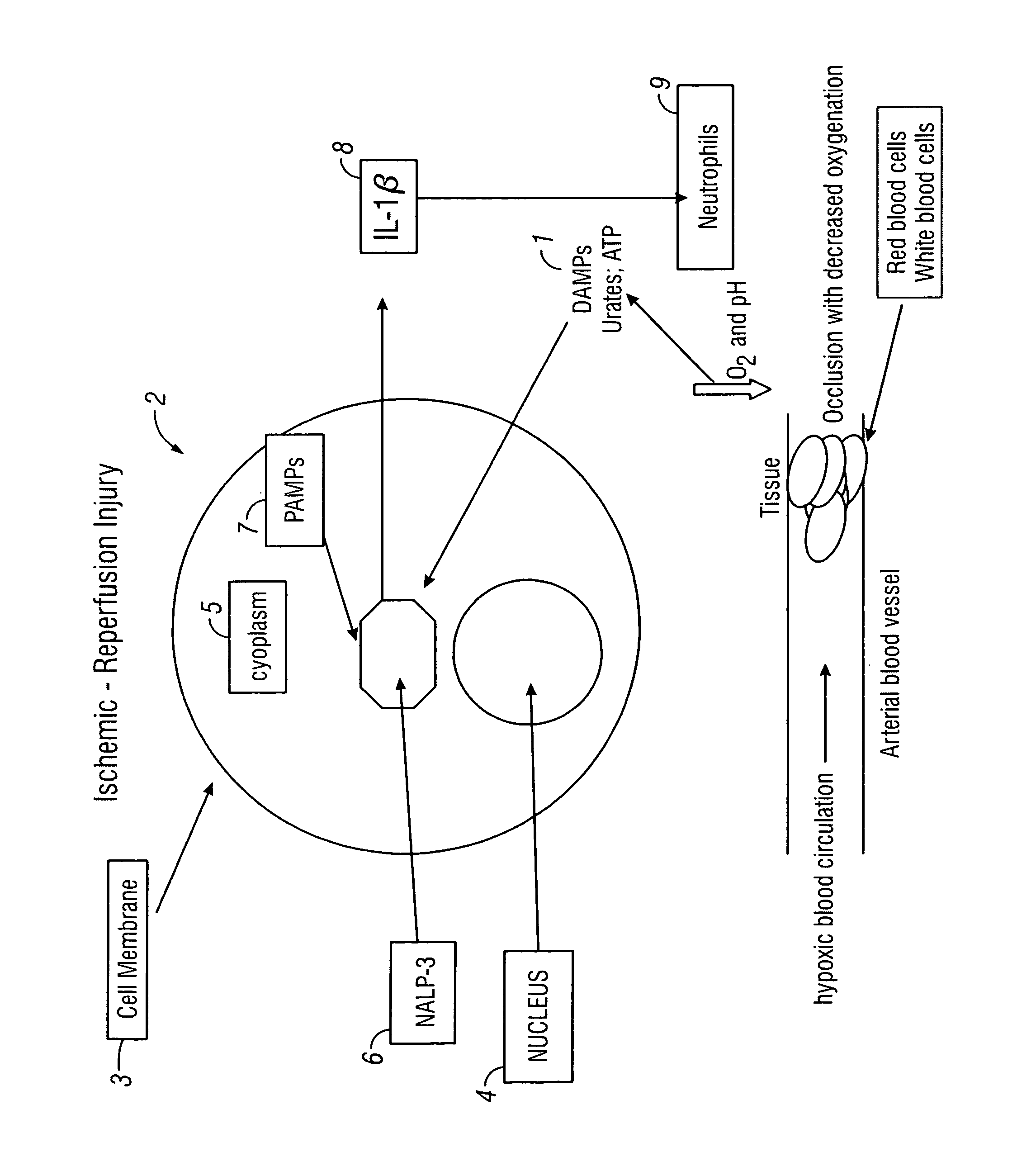Rationale for IL-1 β targeted therapy to improve harvested organ viability, allograft tolerance, replant success and for conditions characterized by reduced or absent arterial perfusion
- Summary
- Abstract
- Description
- Claims
- Application Information
AI Technical Summary
Benefits of technology
Problems solved by technology
Method used
Image
Examples
Embodiment Construction
[0008]Harvested organs exhibit classic IRI caused by systemic hypoxia from loss of arterial supply. There is concomitant breakdown of cells, nucleotides, freeing of ATP, intracellular hypokalemia, buildup of urates and calcium pyrophosphates which crystallize at lower pH. FIG. 1 illustrates an arterial blood vessel that is compromised either by partial or complete occlusion or by ablation as when an organ is harvested. The effect are hypoxia or anoxia contiguous to cells and tissue, and anaerobic acidosis as shown by a decrease in tissue pH. Next to the blood vessel is an enlarged tissue cell. All of the aforementioned biochemical effects are referred to as DAMPs (1). An enlarged cell (2) is shown with a cell membrane (3), nucleus (4), cytoplasm (5) which contains the aggregated NALP-3 inflammasome (6). PAMPs (7) are shown engulfed into cytoplasm (5). The DAMPs (1), such as crystallized urates or free ATP are detected by the cell membrane (3) and / or by being partially engulfed into ...
PUM
| Property | Measurement | Unit |
|---|---|---|
| Biological properties | aaaaa | aaaaa |
| Therapeutic | aaaaa | aaaaa |
Abstract
Description
Claims
Application Information
 Login to View More
Login to View More - R&D
- Intellectual Property
- Life Sciences
- Materials
- Tech Scout
- Unparalleled Data Quality
- Higher Quality Content
- 60% Fewer Hallucinations
Browse by: Latest US Patents, China's latest patents, Technical Efficacy Thesaurus, Application Domain, Technology Topic, Popular Technical Reports.
© 2025 PatSnap. All rights reserved.Legal|Privacy policy|Modern Slavery Act Transparency Statement|Sitemap|About US| Contact US: help@patsnap.com


